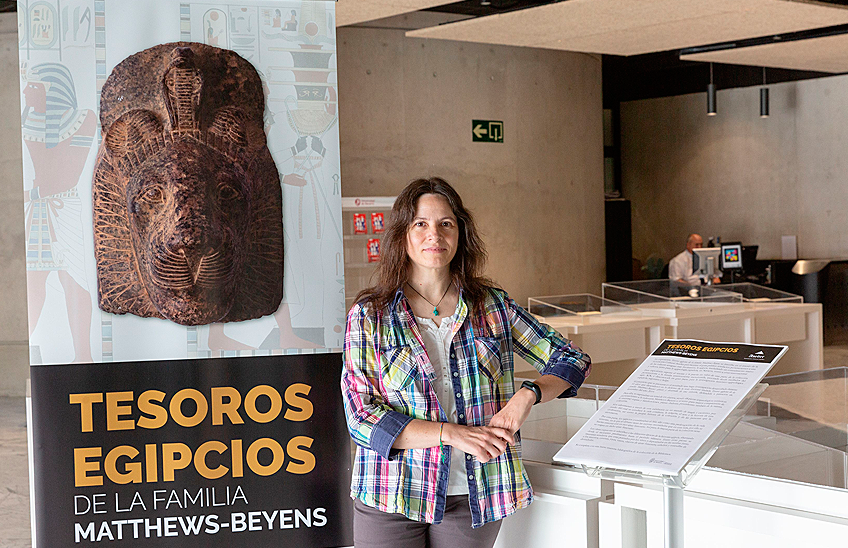Ancient Egyptian life and customs travel to the University
The Library Services of the University hosts a exhibition that brings together the collection of the Matthews-Beyens family.

FotoManuelCastells/Olga Navarro Cía, curator of the exhibition on Egypt installed in the central library of the University.
08 | 09 | 2023
The Library Services of the University of Navarra hosts the exhibition "Egyptian treasures of the Matthews-Beyens family", a sample that brings us closer to the daily life, religion, art and history of the Egyptian civilization, as well as to the history of the collection and the people who treasured it. The collection belonging to the Matthews-Beyens family dates from the mid-19th century and is largely unknown to the Spanish, Argentinean and Belgian historical-egyptological research .
The sample is composed of 64 works: 48 are authentic archaeological pieces; the rest, for a better understanding of the sample, are copies, forgeries and dubious pieces, also from the same collection. They are ascribed to different periods of Egyptian history, ranging from the pre-dynastic to the Islamic period. It is completed with books from the collection of the Library Services, corresponding to the XVII, XVIII, XIX and XX centuries.
The exhibition can be visited until November at the entrance hall of the Main Library at schedule from 8 am to 9 pm, Monday to Saturday and Sundays from 10 am to 2 pm. Also available at available on the website is the virtualexhibition .
Scarabs, amulets, jewelry, vases, funerary objects, ushebtis and statuettes of divinities that were deposited in the tombs, objects used for aesthetics and beauty, works of art, etc., are collected in this exhibition that brings the viewer closer to the life and customs of ancient Egypt.
The sample is the result of the research developed for 10 years by Olga Navarro, PhD in Art History from the UNED and curator of the exhibition, which culminated with the reading of the doctoral thesis entitled "Egyptian treasures of the Matthews-Beyens family: genesis and development of a collection", defended in early December 2019.
"Beyond the enhancement of the collection itself, one of the contributions of this research lies in the identification of copies and forgeries, which were sometimes made by artists with access to scientific publications and with some basic knowledge of Egyptian art," said Olga Navarro.




